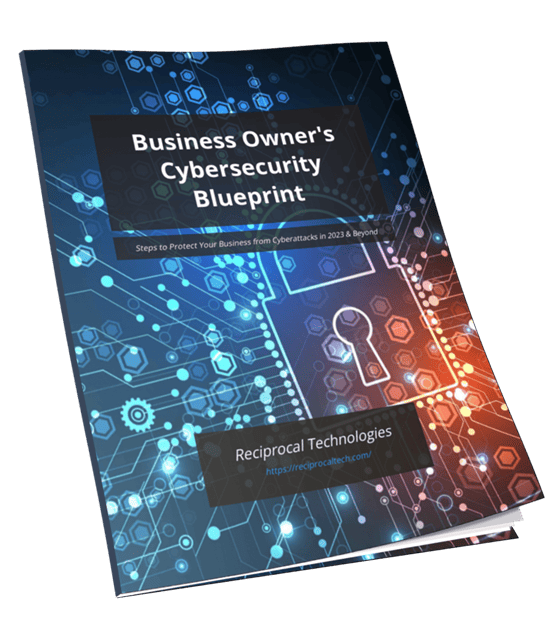HIPAA Compliance Made Simple: A Checklist for Healthcare Teams

The Compliance Conversation Nobody Wants, But Everybody Needs
The word “compliance” probably doesn’t fill you with excitement. If you’re running a medical practice, dental office, therapy clinic, or any healthcare organization, you got into this field to help people, not to become an IT security expert. But here’s the reality: the moment you started storing patient information electronically, you also became responsible for protecting it at a level that meets strict federal standards.
The good news? HIPAA compliance isn’t an impossible mystery. The bad news? Ignoring it can result in fines per violation and can climb into the millions, plus the reputation damage that comes with a data breach. The even better news? With the right approach and the right partner, you can check all the boxes without losing sleep.
This isn’t a legal document or a government manual. Think of this as a straight talk guide to what your IT infrastructure actually needs to be compliant, and more importantly, secure.
Where the Risk Actually Lives
HIPAA is all about protecting what’s called Protected Health Information, or PHI. This is any information that can identify a patient and relates to their health, treatment, or payment. It includes names, addresses, dates of birth, Social Security numbers, medical records, billing information, and even appointment schedules. If it has a patient’s name attached to health data, it’s PHI, and you need to protect it.
Here’s where most healthcare organizations store this information and where your compliance efforts need to focus:
Your Electronic Health Records (EHR) System
This is the crown jewel. Your EHR holds everything: patient histories, medications, test results, diagnoses, and treatment plans. It needs to be locked down. That means controlling who can access what. A front desk receptionist shouldn’t have the same system access as a physician. Role-based access controls ensure everyone sees only what they need to do their job. Your EHR also needs to create an audit trail. You need to know who accessed a patient’s file, when, and what they did. This isn’t just good practice; it’s a HIPAA requirement.
Email and Communication Platforms
Here’s a mistake we see all the time: staff emailing patient information using regular, unencrypted email. That’s a violation waiting to happen. Any electronic communication containing PHI must be encrypted, both in transit and at rest. This includes emails, text messages, and file transfers. You need a secure communication platform designed for healthcare, and your staff needs to know how and when to use it.
Your Network and Servers
Whether your servers are sitting in a closet in your office or hosted in the cloud, they need multiple layers of security. Start with a business-grade firewall that acts as a gatekeeper for all incoming and outgoing traffic. Add intrusion detection and prevention systems to catch suspicious activity. Make sure your Wi-Fi network is encrypted and separated: guests should never be on the same network as patient data. Regular security patches and updates are non-negotiable. Hackers actively exploit known vulnerabilities in outdated software.
Backup and Disaster Recovery
HIPAA requires that you can restore patient data in the event of an emergency. This means you need a solid, tested backup plan. Automated, encrypted backups should happen daily, and those backups need to be stored off-site or in a secure cloud environment. Just as important: you need to test your disaster recovery plan regularly. A backup is useless if you can’t actually restore from it when you need to.
Mobile Devices and Remote Access
Laptops, tablets, and smartphones are incredibly convenient, but they’re also incredibly easy to lose or steal. Any device that accesses PHI needs to be encrypted, password protected, and remotely wipeable. If a doctor’s laptop goes missing, you need the ability to erase all the data on it from a distance. Remote access to your systems should only happen through a secure VPN (Virtual Private Network), never over public Wi-Fi without protection.
The Human Element: Training and Policies
Technology can only protect you so far. The weakest link in any security system is often the people using it. HIPAA requires annual training for all employees who handle PHI. This training should cover what PHI is, how to handle it, how to spot phishing emails, password best practices, and what to do if they suspect a breach.
You also need written policies and procedures. This includes an Incident Response Plan for when something goes wrong, clear guidelines on acceptable use of technology, and a process for granting and revoking system access when employees are hired or leave. These policies need to be documented, updated regularly, and actually followed.
What Happens When You Work with a Compliance-Focused IT Partner
Trying to manage all of this on your own is overwhelming, especially when you’re busy running a practice. A managed IT provider with healthcare experience becomes your compliance partner. They handle the 24/7 monitoring, security updates, encrypted backups, and threat detection. They conduct regular risk assessments to identify gaps before an auditor does. They help you create and maintain the required documentation and policies. And when it’s time for an audit or if a breach happens, you have experts on your side who know exactly what to do.
The goal isn’t just to pass an audit. It’s to genuinely protect your patients’ sensitive information and give you the peace of mind to focus on delivering excellent care.
Frequently Asked Questions About HIPAA Compliance
What’s the difference between the HIPAA Security Rule and the Privacy Rule?
The Privacy Rule governs how PHI can be used and disclosed, and it gives patients rights over their health information. The Security Rule, which is what IT infrastructure addresses, sets the standards for protecting electronic PHI (ePHI) through administrative, physical, and technical safeguards. Both rules work together, but IT focuses primarily on the Security Rule.
Do I really need a Business Associate Agreement (BAA) with my IT provider?
Absolutely, yes. If your IT provider has any access to your systems where PHI is stored, they are considered a Business Associate under HIPAA. A signed BAA is a legal requirement. It ensures they understand their responsibility to protect PHI and outlines what happens in the event of a breach. Any reputable healthcare IT provider will have a standard BAA ready to sign.
How often should we conduct a HIPAA risk assessment?
The Department of Health and Human Services recommends conducting a comprehensive risk assessment at least annually. You should also conduct one whenever there’s a significant change to your IT infrastructure, like migrating to a new EHR system, opening a new location, or adopting new technology. The risk assessment identifies vulnerabilities and helps you prioritize your security investments.
What should we do immediately if we suspect a data breach?
Time is critical. First, contain the breach by isolating affected systems to prevent further data loss. Second, document everything: what happened, when, and who was affected. Third, notify your IT provider or security team immediately. HIPAA requires that you report breaches affecting 500 or more individuals to the Department of Health and Human Services within 60 days. Smaller breaches must be reported annually. You may also need to notify affected patients.
About the Author
Author’s recent posts
Download the
Business Owner’s Cybersecurity Blueprint


